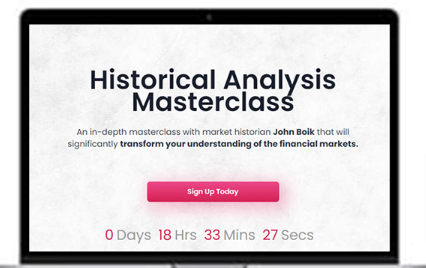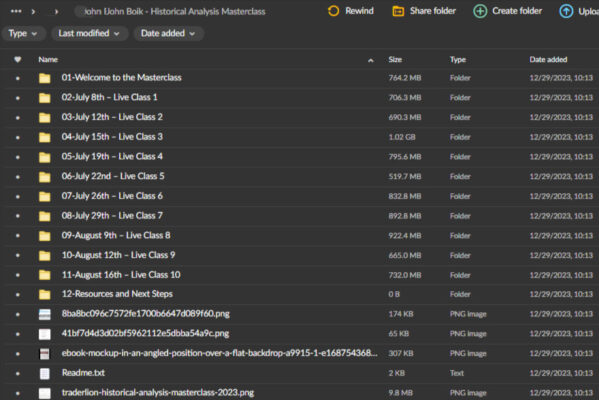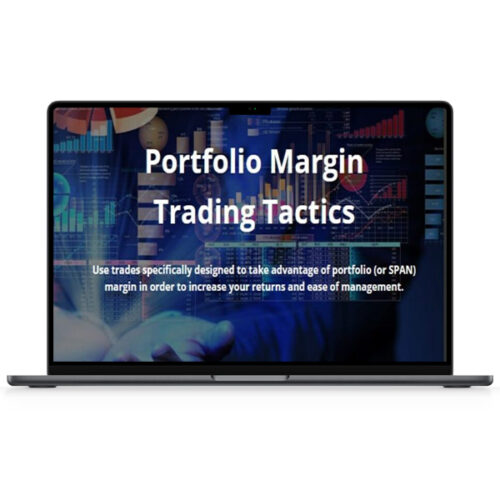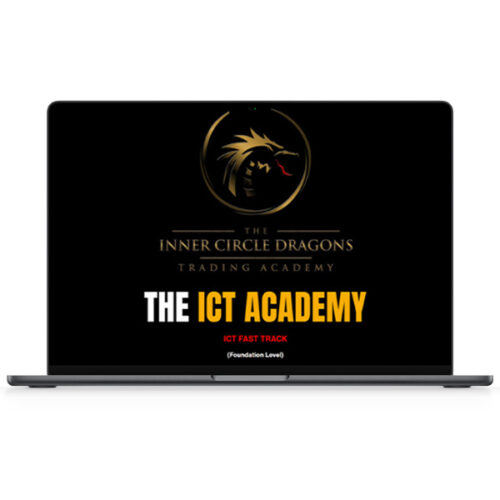John Boik – Historical Analysis Masterclass
Original price was: $445.00.$20.00Current price is: $20.00.
- 24/7 Contact Support & Fast Chat
- Original Courses HD Quality
- Courses Are Updated
- Checked Download Links
- Guaraneed Safe Checkout
Description
John Boik – Historical Analysis Masterclass

Historical Analysis Masterclass Course by John Boik: Unlocking Timeless Trading Insights
If you’ve ever wondered how legendary traders shaped the financial landscape or want to understand the cycles that define the market, John Boik – Historical Analysis Masterclass thoroughly explores market history, strategies, and lessons from the greats. This course goes beyond surface-level knowledge to provide a rich understanding of market dynamics across various eras, distilling the techniques and strategies that remain relevant for traders today.
Why Study Historical Trading Success?
John Boik’s Historical Analysis Masterclass is an exceptional resource for anyone seeking to understand how historical cycles and market patterns offer timeless insights into trading. With lessons from industry giants like Jesse Livermore, Warren Buffett, and Ray Dalio, this course provides a roadmap for understanding and leveraging trading strategies that have stood the test of time. Boik’s course allows participants to explore the fundamental principles these traders used and how these can apply to today’s trading environment.
The course explores the motivations, risks, and pivotal decisions that made these traders stand out. Tracing their stories and strategies, you’ll gain a deeper understanding of how to apply these principles to your trading approach, regardless of current market conditions.
What Makes John Boik’s Approach Unique?
Book takes a comprehensive approach by covering a broad timeline from the early 20th century to the present, examining how legendary traders adapted to different economic climates. His course emphasizes the “why” behind each decision, offering a layered understanding of how these timeless strategies connect with today’s trading tools and knowledge. This broad perspective not only reinforces the fundamentals but also helps traders develop adaptable strategies.
By examining these cycles, Boik demonstrates how to read the market’s “pulse” and forecast potential upturns and downturns. Through analyzing past markets, Boik provides the context and reasoning that help traders distinguish between fleeting trends and meaningful shifts.
Who Were the Legendary Traders, and What Can We Learn from Them?
Early 20th Century Giants: Jesse Livermore and Bernard Baruch
Boik opens with an exploration of early market pioneers like Jesse Livermore and Bernard Baruch. Their stories are more than historical anecdotes—they are critical studies in risk management, market timing, and resilience. Both Livermore and Baruch mastered the art of “reading” the market and identifying opportunities in volatile conditions. Boik’s analysis of these pioneers offers valuable insights for traders aiming to understand fundamental market movements without relying solely on modern technology.
Through these historical examples, Boik highlights techniques such as short selling, speculative trading, and market timing. For instance, Livermore’s famous “pivotal point” approach, which focused on identifying critical price movements, is dissected to show how these concepts can still help traders navigate today’s dynamic markets.
Mid-20th Century Visionaries: Buffett, Soros, and the Power of Investment Philosophy
Moving into the mid-20th century, Boik delves into the tactics of Warren Buffett and George Soros, whose names are synonymous with strategic investing and risk management. While Soros built his fortune with high-risk plays based on geopolitical shifts, Buffett embraced a value-driven, long-term approach. Boik’s breakdown of their contrasting yet successful approaches offers insights into both high-stakes and conservative trading strategies. By studying these methods, traders can evaluate which investment style best suits their goals and risk tolerance.
Boik offers actionable steps to help students apply the logic behind these techniques, from identifying undervalued stocks to understanding the broader economic forces influencing a stock’s trajectory.
Contemporary Market Legends: Dalio, Tudor Jones, and the Enduring Power of Diversification
In the final segments on legendary traders, Boik examines the strategies of modern-day icons such as Ray Dalio and Paul Tudor Jones. Both traders have emphasized the importance of economic cycles, global events, and diversified portfolios in trading. By covering these figures, Boik emphasizes the need for adaptability and how to manage risk across multiple asset classes.
Boik connects the lessons from Dalio and Jones to broader themes, such as the importance of diversification in volatile times and how strategic allocation can buffer against unpredictable events.
How Do Market Cycles Influence Trading?
Monster Stocks and Historic Cycles: 1900s to 1940s
A unique feature of the John Boik – Historical Analysis Masterclass is the focus on “Monster Stocks” and their relevance to historical market cycles. In this segment, Boik dissects the period from the 1900s to the 1940s, studying how certain stocks achieved exceptional growth and shaped the market landscape. Understanding these “Monster Stocks” offers insights into recognizing high-growth opportunities in their early stages, helping modern traders apply these methods to discover future market leaders.
Boik covers cycles of boom and bust, allowing students to see how external factors—from geopolitical events to technological advancements—play a role in market movement. He reveals how market psychology, government policies, and financial innovations have historically impacted stock performance, and he distills lessons that traders can apply today.
Shifts in Market Dynamics: 1950s to 1970s
The course then transitions to post-World War II, where Boik explores how conglomerates and changing political landscapes influenced stock trends. As industries shifted, so did the strategies traders used to achieve success. Boik shows how traders can learn from these cycles to adapt and anticipate shifts in modern market dynamics.
Boik uses this period to highlight the evolving role of regulation, how it affected corporate growth, and how traders adapted to these changes. By studying this era, traders gain tools to understand the impact of policy on today’s financial environment.
1980s to 1990s: The Information Age and New Trading Horizons
The advent of technology and the rise of global communication transformed the trading landscape in the 1980s and 1990s. Here, Boik discusses the power of information technology, increased market access, and the growth of information-driven trading. This era’s pivotal events, like the dot-com boom, are explored to uncover patterns that today’s traders can utilize, particularly in tech and speculative markets.
By examining how information technology shaped this era’s trading approaches, Boik draws parallels to today’s data-driven and tech-dominated trading landscape. His insights help traders understand how technological advancements can be leveraged for strategic advantage.
How to Apply Historical Knowledge in Today’s Market
Boik doesn’t just stop at history—he shows traders how to apply these historical insights in the modern market. By reviewing Monster Stock Templates, identifying high and low trends, and examining today’s stock cycles, Boik equips traders to interpret the current market landscape with a seasoned eye. He breaks down technical indicators and price patterns, demonstrating how these tools can help traders recognize and act on market shifts.
The course emphasizes adaptability, urging students to maintain flexible trading approaches informed by historical patterns. For example, traders learn how cyclical market tendencies may predict both upswings and downturns, helping them to time entries and exits with greater precision.
What Unique Tools Does This Course Offer?
In-Depth Analysis and Case Studies
Throughout the course, Boik presents case studies and detailed analyses, connecting each historical lesson with practical applications. These examples reinforce the idea that history, when interpreted correctly, can offer actionable insights for today’s trading challenges. Through these case studies, Boik empowers traders with the knowledge to navigate complex markets with confidence.
Real-World Applications and Live Market Assessments
Boik’s masterclass includes ongoing analysis of current conditions, drawing direct comparisons between past cycles and current events. This up-to-date application allows students to witness how historical knowledge aids in interpreting and responding to live market conditions. By studying these live assessments, students become adept at identifying emerging trends and developing timely strategies.
Why Choose the John Boik – Historical Analysis Masterclass?
John Boik – Historical Analysis Masterclass is an ideal course for those who seek to elevate their trading skills by learning from the past. Boik’s focus on legendary traders, market cycles, and critical analysis provides a comprehensive approach to financial education. This course is a strategic investment for traders looking to understand the forces shaping the market while gaining a tactical edge in their trading approach.
Through Boik’s seasoned perspective, traders are empowered with the tools to make informed, calculated decisions, leveraging the wisdom of history to shape a prosperous trading future. For traders of all levels, this course bridges the past and present, unlocking a new dimension of market understanding that offers both depth and actionable insight.
Enroll in the John Boik – Historical Analysis Masterclass today and equip yourself with a blueprint for informed and empowered trading.









